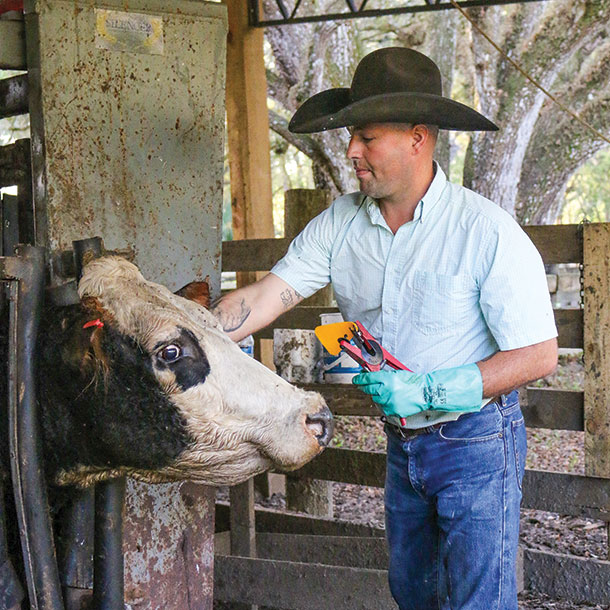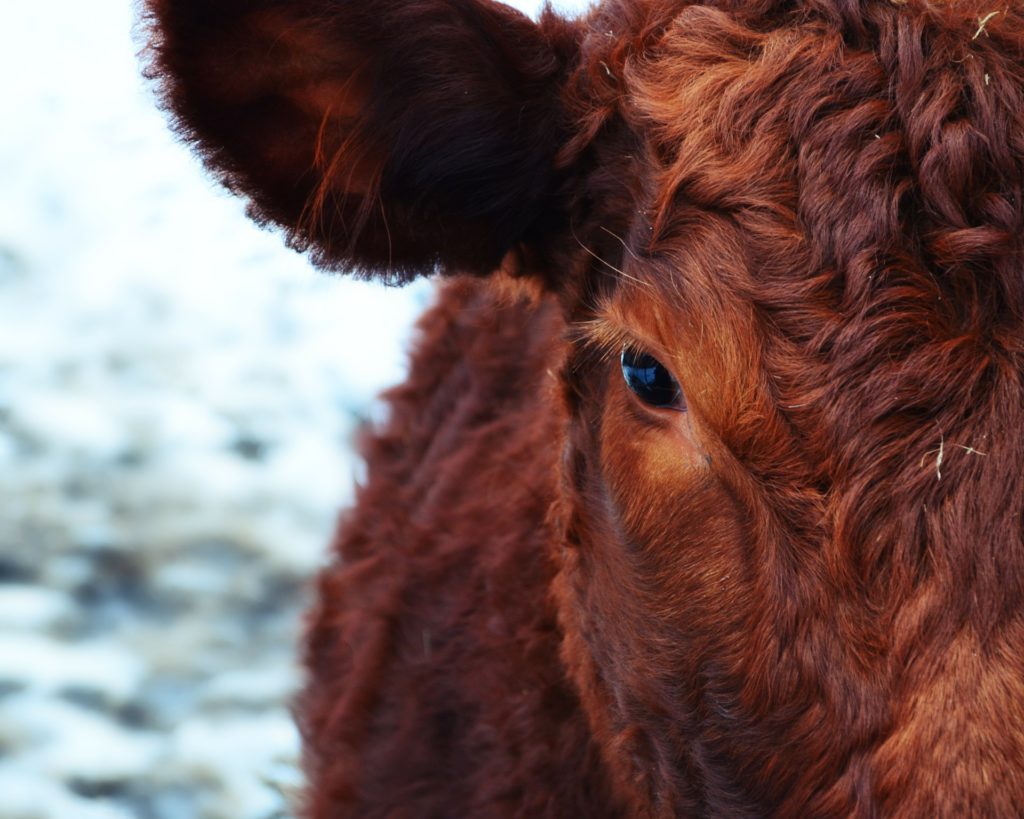Fly management is no small component of herd health. Limiting them reduces disease, increases animal comfort and allows greater efficiency.
Fly tags can be an important part of this program when certain species become excessive for animals on pasture.
However, there’s more at play than just sticking a tag in an ear and walking away. To get the most out of the investment, producers should be strategic in how they utilize fly tags in the summer months.
“Every rancher is going to have a different [fly] management system,” says Dave Boxler of the University of Nebraska – Lincoln. “I know a lot of producers who really like the insecticide eartag because they can put it on and not have to go out and deal with other treatment methodologies through the fly season.”
Determining the right product
There are three broad categories of flies – horn flies, face flies and stable flies. Fly tags are made to target both face and horn flies with an active chemical ingredient. (Stable flies are best addressed by cleanliness and manure removal, which breaks their life cycle – but sprays and dusts are also available.)
That said, there is an economic threshold of horn and face fly populations that may or may not make tags cost-effective.
“On horn flies, you’re looking at about 200 flies per animal,” says Harold Newcomb, technical services veterinarian with Merck Animal Health.
Face flies, due to spending little time physically on the animal, have a significantly lower threshold, he continues, about 15 to 20 per animal.
In addition to cost effectiveness, tags shouldn’t be applied unnecessarily. This will help cut down on resistance buildup.
Chance Armstrong, assistant professor at Louisiana State University, says fewer than 50 horn flies per animal may lead to such an instance. For the same reason, he also recommends completely removing all tags at the end of each season.
When selecting specific types of fly tags, Newcomb recommends looking at the ingredients in each first and foremost. Essentially, there are three classes of primary active ingredients available in today’s commercial fly tags.
These are the pyrethroids (or synthetic pyrethroids) and organophosphates, Newcomb says. There are also some tags that use a combination of the two. Finally, there are also tags with macrocyclic lactones – usually abamectin – in them.
Resistance, again, is a reason to rotate different active ingredients on an annual basis.
Insecticide eartags are designed to actually kill flies. Whenever an animal moves its head, the plastic matrix releases a “bloom” of the active ingredient, Boxler explains. As such, fly populations can develop a genetic resistance similar to internal parasites and dewormers.
Proper usage
After deciding adding tags to your pest management program will be effective and financially feasible, the next step is to utilize them properly. Improper usage or lack of oversight can create more problems than it solves.
First and foremost, tags need to be built into a larger total fly management program. As part of this, Newcomb suggests using insect growth regulator as a feed or supplement additives prior to fly season.
To get maximum effectiveness when tags are placed, he also recommends using a topical pour-on fly repellant at the same time. Whatever repellant is used, it should always be a different ingredient class than the tag.
“This helps knock down fly numbers on the animal and helps keep the fly control program working,” he explains. “Dust bags and back rubbers and/or oilers should also be a part of a total fly control program.”
A pour-on dewormer used with tags, alternatively, is not recommended, as it can lead to internal parasite resistance issues.
Determining the time of tag application will depend on specific region and climate. For example, a very warm spring will mean higher numbers of flies earlier, compared to a cold or cooler spring, says Boxler. This can be a conflict depending on when producers put their animals out to pasture.
In some regions of the country, insecticide tags may be applied in late April or early May. In these situations, however, the tag may not provide season-long fly control, meaning it may have to be replaced later in the year. Whether this is or is not necessary depends on several things that contribute to overall fly burden on a given year, including management plan, the weather and pasture conditions.
“As ranchers, what is usually in their best interest is timing [tagging] so they only need to run their animals through the chute once and it will last through the majority of the season,” Boxler says.
Disposal and precautions
Because tags do contain active chemical ingredients, Armstrong stresses the importance of proper disposal at the end of each season. Always, they should be placed in plastic bags and put in designated disposal bins.
“Because the active ingredients are easily absorbed through oils in skin,” he says, “producers must wear long sleeves, long pants and chemical-resistant gloves when handling the tags and wash hands well before eating or drinking.”
Likewise, they can also be toxic to other animals, including fish and aquatic animals, when not disposed of properly. This is a critical reminder, he says, for all producers to follow all instructions provided by the manufacturing process.
“It is important to remember that fly control goes beyond application of eartags, sprays or dusts,” says Armstrong. “Environmental management to minimize fly feeding and breeding sites is just as important.”
Source: Jaclyn Krymowski for Progressive Cattle Published on 24 March 2021
Photo credit: Cassidy Woolsey, Producers should wear chemical-resistant gloves when handling fly tags.








